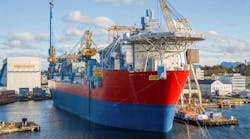New UK tax regime incentivizes all phases of development
On March 18, 2015, the UK government announced the most radical changes to the oil and gas tax regime since 1993, when Petroleum Revenue Tax (PRT) was abolished for new fields. The need for fiscal change was recognized by the government, even before the oil price collapse, as the mature sector has been beset by high costs and declining production for many years. However, the oil price drop added a real sense of urgency. By the time it came to the budget, there was widespread political and industry support for a sizeable tax reduction and an overhaul of the complex allowance scheme.
The changes should incentivize investment at all stages of development. The headline tax rate was reduced from 60% to 50% (and from 80% to 67.5% for older fields) by reducing the Supplementary Charge Tax (SCT) from 30% to 20% (and PRT from 50% to 35%). A series of existing ad-hoc tax breaks was replaced with a universal investment allowance, which is both simpler and wider in application. The investment allowance should bring the tax rate down toward 30% for projects in their early years of production. Lastly, £20 million (more than $29.6 million) of direct government funding was allocated for surveys of under-explored areas. One remarkable feature of the budget is that it introduced lower tax rates to oil companies only seven weeks before the UK general election.
The result is a transfer of value from the government to companies of £13 billion ($19 billion), which is a value boost to operators of around 25%. Our model field analysis shows that the upstream economics in the UK are more favorable than similar projects in Norway, Denmark or Gulf of Mexico, so the UK can rightly claim to have an internationally competitive tax regime.
While the changes are positive for valuations, they made little immediate impact to the cash flow of North Sea operators, as so few were generating a taxable profit at $55/bbl. But it is worth looking at the effect on investment decisions, critical to the health of the industry, for exploration, development of new projects and extending the life of mature assets.
Exploration results have been very poor in recent years, with low volumes discovered and high development costs - neither of which can be addressed by legislation. But the headline tax rate reduction and widening of the investment allowance is good news for explorers as it improves full-cycle economics. Our analysis suggests the new measures, although positive, may not impact decisions to drill prospects of less than 50 MMbbl. The foundations have been set for a revival in exploration, but improvements in oil price, volumes discovered, success rates, and cost reduction could all be required. The £20 million ($30 million) of government funding for seismic will help a little, but it is unlikely to go far. On an under-explored play such as the Rockall Trough, £20 million might fund a survey over less than 10% of its area.
Though investments in major developments will all benefit from the reduced headline tax rate, the impact of the basin-wide investment allowance is more mixed. Some projects already had generous allowances, so there is little difference to economics. But in many cases, there is a significant benefit. The combined effect is that high-cost, pre-final investment decision projects such as Rosebank, Bentley, and Bressay all have improved economics. As do expansion projects such as Clair Ridge and Captain EOR. The Culzean high-pressure/high-temperature gas development gains from the lower tax rate, but is a rare exception in that it will qualify for a HP/HT allowance, and not the new investment allowance.
One surprise of the budget was the reduction of PRT from 50% to 35%. This tax only affects around 50 of the 328 onstream fields; however these are commonly mature fields, which often now also operate as hubs for export infrastructure, satellite fields, and potential future developments. The reduction in PRT is a positive step to extend infrastructure life as decommissioning can be delayed at these fields. This in turn could boost investment in exploration and development around these hub areas.
The UK Budget 2015 was certainly a landmark for the oil and gas industry, and it should be a good confidence booster, but tax changes are only part of the solution. In parallel to the fiscal changes, good progress is now being made on the regulation of the UK continental shelf with a new arms-length regulator, the Oil and Gas Authority, starting to take shape.
But many of the fundamental issues on the UK continental shelf still need to be tackled and more needs to be done by industry itself. The UK remains among the highest cost and most mature offshore provinces. And despite an investment boom of recent years, there is still great concern that the industry is struggling with finding new reserves, low production efficiency, mature fields, ageing infrastructure, and high costs. The industry still has much to do to address these challenges.
Ian Thom
Senior Research Manager
Wood Mackenzie




